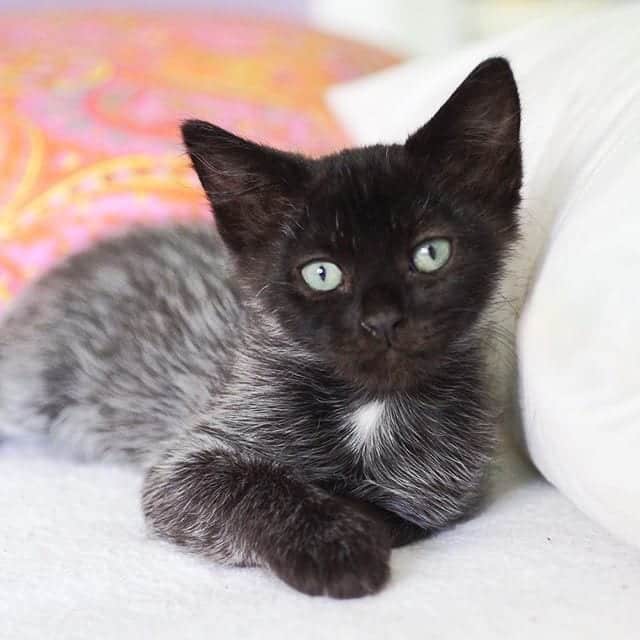Have you ever met a color-changing kitten? I’m not talking about cats that grow up to become a darker, more lustrous shade. It is normal for the coat to lengthen and the pattern to become more pronounced as kittens transition to their permanent coat.
No, the magical color-changing kitties I am referring to have something called a “fever coat” or “stress coat.”
What Is Fever Coat?
Kittens with fever coat are typically born to mothers that have been subjected to fever-inducing infections or extreme stress during their pregnancies. The higher-than-normal temperature within the womb results in kittens with cream, reddish, or frosted silver-gray coats. This occurs because feline coat pigmentation is heat-sensitive, and high heat prevents pigments from properly depositing in the fur.

In rare cases, certain medications may also cause a cat to give birth to kittens with fever coat.
Although it causes some gorgeous and remarkable color patterns, fever coat is not a permanent condition. It tends to last from four to eight months, gradually fading into the cat’s true color as time goes on.
The Different Kinds Of Fever Coats
This condition is not always easy to identify and may be mistaken for the normal color pattern of kittens of a particular breed. Here are a few examples of how fever coat might manifest:
All-Over Color
Many kittens with fever coat are born completely white, silver, or red with just a ghost of pattern underneath indicating the cat they will one day become. An orange tabby may be cream colored with a hint of pale stripes, while a black kitten may be mostly silver with black flecks or patches.
Color Patches
Some kittens have a wild combination of fever coat and natural color. For example, a brown tabby may have completely normal head, tail, and paws, but a fever-coated body. Others may have white just at the roots and normal coloration at the tips.
Dorsal Stripes
In rare cases, kittens may develop parallel white, gray, or red stripes along their backs in what would be a dorsal stripe pattern in a tabby cat. In black cats it can make them look like tiny skunks, while torties and tabbies have an adorable chipmunk-like appearance.
Since all cats are genetically tabby until they receive a particular gene, any kitten can potentially have these dorsal stripes. However, like all fever coat patterns, they will disappear when the cat molts and the adult coat grows in.
Color-Points
Fever coat is not to be confused with the undeveloped color seen in young Siamese, Himalayan, and other color-pointed kitties. The enzymes which control the color of their fur only develop in temperatures under 100 degrees – much cooler than their mothers’ wombs. Therefore, these cats are born solid cream and the points develop at the coolest regions on their bodies, the paws, tail, face, and ear tips.
Although a fever coat indicates the mama cat was sick, most kittens with this condition are perfectly healthy. Plus, it makes for a great story and some seriously adorable kitten photos!





